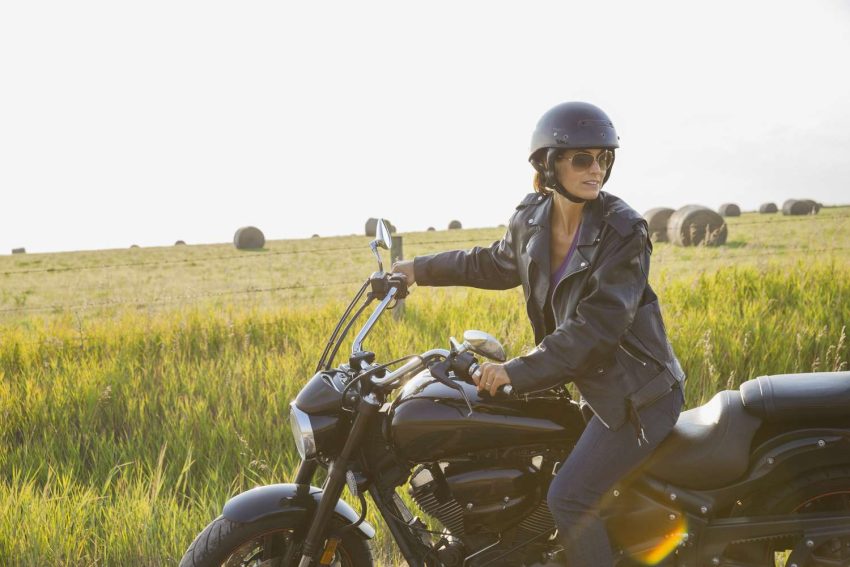A dream bike is a subjective term and can mean different things to different people. It typically refers to a motorcycle that a person has always desired or aspired to own. The aspiration or desires often arise due to its performance, design, or prestige. Some popular dream bikes include high-performance sports bikes, classic and vintage motorcycles, and custom-built bikes or cafe racer.
When choosing a dream bike, it is important to consider factors such as budget, intended use, and personal preferences. For example,if you want to purchase a commuter bike, Hero xtreme 160R will be a budget bike in this segment. Additionally, make sure to carefully research and take a test ride. Follow the mentioned tips before making a purchase to ensure that it meets your expectations and is suitable for your riding needs.
1. Determine your budget
Before you start shopping for a motorcycle, determine how much you can afford to spend. This will help you to cut down your options and help you avoid overspending. The budget for purchasing a motorcycle can vary depending upon several factors. Those factors may be the type of motorcycle, brand, and model, as well as whether you are purchasing a new or used bike. For example the Hero Xtreme 160R price may fall in your budget. A new entry-level motorcycle can cost anywhere from 1 lakh to 2 lakh, while more premium models can cost upwards of 2.5 lakh or more. Spending more than your budget may imbalance your financial condition, so think twice before making a decision.
2. Used motorcycles can be a more budget-friendly
Used motorcycles can be a more budget-friendly option. They might offer you with prices ranging from 50 thousand Rupee up to more, depending on the make, model, and condition of the motorcycle. It’s important to set a budget before you start shopping for a motorcycle, and to stick to it as much as possible. In addition to the purchase price, you will also need to add the factors in total such as maintenance, insurance, and safety gear. If you visit the bike market, you will find the shops full of bike accessories. I would suggest you to pick only essential accessories without compromising the quality and performance.
3. Choose the type of motorcycle
Decide what type of motorcycle best suits your needs and lifestyle. Consider factors such as the intended use, riding style, and body size. Bikes can be your ultimate partner depending upon what’s the purpose of your bike. A bike has multiple uses for commuting, touring, off-roading, etc.
There are several types of motorcycles, including:
- Cruiser
- Sport Bike
- Touring bike
- Standard or Commuter bike
- Dirt Bike
- Scooters
- Electric bikes
4. Research different models and brands
Before you start your research, it is important to have a clear understanding of what you are looking for. Determine the type of product or service you are interested in, and any specific features or requirements you need. For example, If you want a mid segment sports category bike, you can consider the models such as xtreme 160R. Along with this read reviews, compare specifications, and take test rides if possible. Do not follow the brand blindly if you don’t fulfil your requirement. Keep the use of your bike on priority followed by the brand.
5. Evaluate the condition of the motorcycle
Before making a purchase, thoroughly inspect the motorcycle for any mark or damage or wear and tear. Have a trusted mechanic to inspect the motorcycle if you are unsure. To evaluate the condition of a motorcycle, you would need to perform a thorough inspection of the various components and systems, including: Engine and transmission, tires and brakes, all the electronic systems, suspension and handlebar including frame and body.
6. Negotiate the price
If you are purchasing a used motorcycle, try to negotiate the price with the seller. Be realistic and don’t be afraid to walk away if the price is not in your budget. Before making a final deal, walk around the market and try to find out multiple sellers to assure a valid amount.
7. Obtain proper insurance
It is highly advisable to make sure you have ensured adequate insurance to protect yourself and your motorcycle. Obtaining proper insurance is important to protect against financial loss in case of accidents, injuries, or damage of your bike. Different types of insurance are available for various circumstances, such as health insurance, auto insurance, home insurance, and life insurance. It’s important to assess your needs and choose the insurance policy for your bike that provides adequate coverage in specific situations.
8. Take a motorcycle safety course
Consider taking a motorcycle safety course to learn how to operate your motorcycle safely and responsibly. Taking a motorcycle safety course is a good way to learn the skills and knowledge necessary for safe and responsible motorcycle riding. These courses typically cover topics such as motorcycle operation, traffic laws, and safe riding practices. They often provide hands-on riding experience, allowing riders to practise the skills they have learned in a controlled environment.
Many states require motorcycle riders to take a safety course as a prerequisite for obtaining a motorcycle license. Even if it is not required, taking a motorcycle safety course can be beneficial for riders of all levels of experience, as it can help improve their riding skills and increase their awareness of safe riding practices. Overall, taking a motorcycle safety course can help in the reduction of road accidents. Also, it can help to improve the overall safety of motorcycle riding.
9. Wear proper gear
Always wear a helmet and protective clothing when riding a motorcycle to reduce the risk of injury in the event of an accident. Wearing proper gear is important to ensure safety and comfort in various activities and sports. In many cases, specific gear is required for protection against injury and to enhance performance. For example, in sports like bike racing, cycling, skateboarding, or rollerblading, protective gear such as a helmet, knee pads, and elbow pads are essential.
In activities like construction or industrial work, proper gear such as safety glasses, hard hats, and steel-toed boots can help prevent serious injury. In general, wearing the appropriate gear for an activity can help reduce the risk of injury and improve overall safety.
1. Follow traffic rules
Following traffic rules is essential for maintaining laws on roads and ensuring the safety of all citizens walking on the road. Some common traffic rules include obeying traffic lights and signs, riding on the correct side of the road, using seat belts, and avoiding distractions while riding. It’s important to stay informed about traffic rules in your area and always follow them to help prevent accidents and ensure a safe and smooth riding experience.
Read more about upcoming scooters in India.




